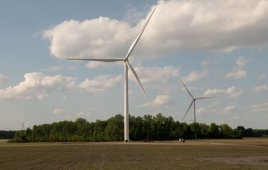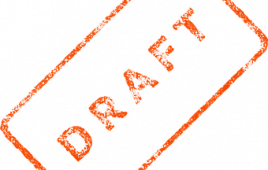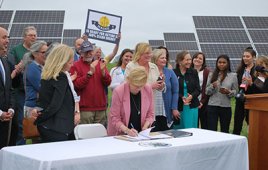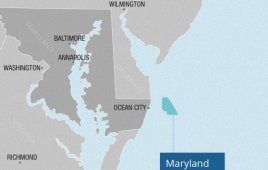
Cup anemometers or ultrasonic versions: Which works best where icing is worst? That is the questions to be answered after a 12 month study by Windpole LLC.
Windpole Ventures LLC of Arlington, Mass. has teamed with Garrad Hassan Americas to conduct a twelve month comparative study of ultrasonic and cup anemometers. The test will take place at locations in Illinois, Iowa, and Indiana, where winter-anemometer icing can be severe.
Both sensors will be unheated during the test. Boom configuration will be standardized and recommended by the third-party engineering firm. Tests will use a Lufft ultrasonic unit from LUFFT USA, which promises to address the problem of cup damage from falling ice and lost data as ice freezes sensors. The Lufft is armored, affordable, and can be heated. “Ultrasonic sensors seem expensive at $1,000 to $1,500 per unit,” says WindPole CEO Steve Kropper. “A cup anemometer with a calibration certificate may cost just $350. But we look at life-cycle costs over five years. As soon as a cup sensor fails, that “cheap” anemometer looks expensive.” Industry standard cup (mechanical) anemometers were chosen for this study to reflect ‘industry standard’ for wind assessors in the US.
After the field study, Garrad Hassan will submit a complete analysis of the results. The results will be queried on three parameters.
1) Data-quality comparison. Does data produced from ultrasonic sensors track that of the ‘industry standard’ mechanical sensors?
2) Ice resistance during icing events
3) Common failure causes for mechanical and ultrasonic units
While mechanical (cup) sensors are the commonly accepted technology in the wind industry, the precision and maintenance free aspects of ultrasonic sensors make them attractive to the wind assessment field especially in applications requiring real-time data. The National Weather Service upgrade from mechanical to ultrasonics started an industry trend. However, the IEC proscribes mechanical sensors for use in wind assessment. Time, research, and experience will show how the industry will accept growing use of ultrasonic technology.
Filed Under: Uncategorized




